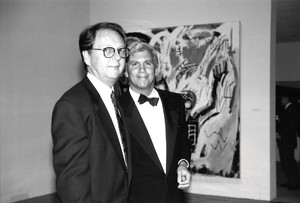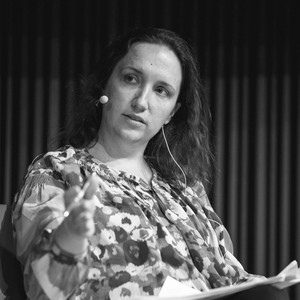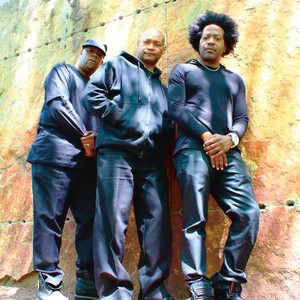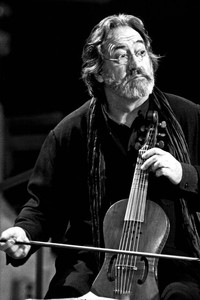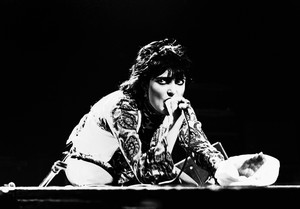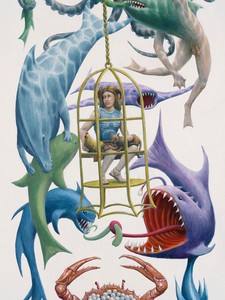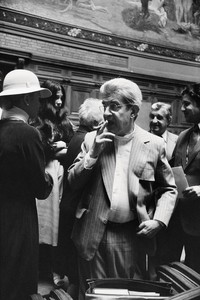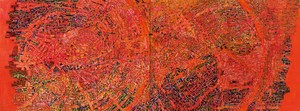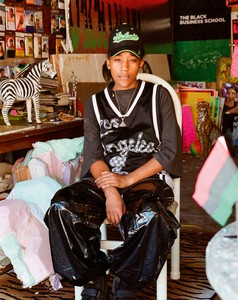A native of Southern California, Richard Marshall moved to New York in 1973 to attend the Whitney Museum of American Art’s Independent Study Program, which led to a curatorial position and a twenty-year tenure working at the museum, and to his becoming one of the most influential curators of his generation. His first exhibition was Calder’s Universe (1976–77)—an auspicious start, to say the least. Mimi Poser, head of development at the Guggenheim at the time, described the exhibition on New York’s NPR radio, WNYC: Alexander Calder’s “long and happy career was a series of successes, the latest of which is the big and beautiful exhibition currently on view at the Whitney Museum. . . . Calder died less than a month after the opening of the show, but he lived to read the universally ecstatic reviews and see an adoring public streaming in to see his work.”1 That’s an impressive acknowledgment for an aspiring young curator’s first exhibition.
Marshall brought a high level of scholarship to all of his endeavors, merging his expertise in the traditions of art with a thoughtful and enthusiastic pursuit of the new. His intellect and enthusiasm endeared him to a generation of artists who trusted his vision and stewardship in the formative years of their careers, while he in turn played a pivotal role in introducing their work to the public. The list of artists he championed is long and varied, including but not limited to Louise Bourgeois, George Condo, Félix González-Torres, Mike Kelley, Robert Mapplethorpe, Joan Mitchell, Louise Nevelson, Ed Ruscha, Christopher Wool, and many others. Richard Armstrong, an early and frequent collaborator with Marshall and the former director of the Guggenheim, has said that Marshall “was unusual for a young curator, because he had great empathy for artists, he had a very acute visual intelligence.”2
Beginning in 1979, Marshall worked closely alongside fellow Whitney curators—Armstrong, Barbara Haskell, John G. Hanhardt, Lisa Phillips, Mark Segal, and Patterson Sims—to cocurate seven Whitney Biennials, making each iteration a highly anticipated exhibition that captured the spirit of its moment.3 Another landmark project was Marshall’s and Armstrong’s The New Sculpture 1965–75: Between Geometry and Gesture, which focused on a generation of artists in the United States who were developing sculpture from nontraditional materials, including Lynda Benglis, Eva Hesse, Barry Le Va, Bruce Nauman, Alan Saret, Richard Serra, Joel Shapiro, Robert Smithson, Keith Sonnier, and Richard Tuttle. Marshall curated and cocurated so many impressive exhibitions that there is simply not enough space to recall them all here.
Marshall was devoted to the Whitney and a stalwart champion of the museum’s National Committee, working effectively alongside collectors whose support and engagement with artists and with the museum would define the future of the institution’s collection. Notably, he played a critical role in the Whitney’s acquisition of Jean-Michel Basquiat’s remarkable painting Hollywood Africans, a gift from Douglas S. Cramer in 1984, the year after it was made. (That is moving fast by museum-world standards.) Today Hollywood Africans is the Whitney’s single most-often-requested loan for exhibition elsewhere.4 In 1992, Marshall curated Basquiat’s first American retrospective, which traveled from the Whitney to the Menil Collection, Houston; the Des Moines Art Center, Iowa; and the Montgomery Museum of Fine Arts, Alabama. Looking back, it is easy to see that exhibition as an extraordinary success, but at the time it attracted a heightened level of scrutiny, as The Art Newspaper reported back then:
Dismissed in the last months of his life as a spent force who would not match the powerful energy invested in the compositions which he had created at the beginning of his nine-year career, Basquiat briefly recaptured, by the unhappy circumstances of his death, an image of glamour and a wave of speculation which pushed the prices of virtually unsaleable pictures to $500,000. But his work has been a spectacular casualty of the realignment of the contemporary art market. . . . Against this background of shifting perceptions, Whitney curator, Richard Marshall, has launched a bid for reappraisal with a selection of more than 150 paintings and works on paper strongly favoring the imaginative achievement of 1981—83.5
For fifteen years starting in 1975, Marshall was arts editor of The Paris Review, working under George Plimpton to bring the work of artists he felt were visionary into the magazine. His correspondence with artists through his position at the Review was remarkable: myriad letters, drawings, proofs, and studies show how seriously he took that role, seeing it as an opportunity to introduce artists to a wide audience and as a way to elevate the magazine’s dialogue with the contemporary art scene. The magazine benefited enormously from his scholarship, his attention to detail, and his vibrant rapport with artists. Marshall’s personal collection of art reflected this moment in his career, in terms of both his extensive archives—now in the holdings of the Smithsonian’s Archives of American Art—and of the art hanging on the walls of his home in La Jolla and his apartment in New York, which he shared with his partner of over twenty years, the celebrated architect William T. Georgis. Studio Museum in Harlem director Thelma Golden has said of Marshall, “He was a real connoisseur in the oldest, broadest sense of that word. . . . I believe that Richard was someone who believed in art in really broad but also deep ways.”6 According to Gagosian Art Advisory’s Laura Paulson, who knew Marshall beginning in the early 1980s and recently advised on the sale of a selection of works from his collection, “His art collection was remarkable, in part because it was so personal. It was a direct reflection of his journey as a curator and scholar, a unified vision of a generation of artists who came of age in the ’80s and ’90s.”7
In the 1990s, after stepping back from the Whitney and The Paris Review, Marshall worked on a series of independent curatorial and writing projects and on advising collectors. He published monographs on Alex Katz, Joan Mitchell, Georgia O’Keeffe, Jack Pierson, and Ed Ruscha. His collaboration with the Lever House Art Collection, begun in 2003, involved commissioning and exhibiting works by John Chamberlain, Urs Fischer, Tom Friedman, Paula Hayes, Damien Hirst, Barbara Kruger, Liza Lou, Sarah Morris, Tom Sachs, Taryn Simon, and many others for the garden and glass-enclosed lobby of Lever House on New York’s Park Avenue, a site that offered a delightful mix of institutional rigor and openness to the public that overlapped with the balanced approach Marshall had maintained throughout his career.
My own first encounter with Marshall was during this later phase in his career. He always maintained a relaxed California sensibility, approached his projects with a genuine enthusiastic curiosity, and was a respectful collaborator. He was remarkably modest, but as we worked together on several projects over the years, the significance of his earlier contributions would occasionally reveal themselves, each anecdote more impressive than the last. And despite his many accomplishments, he always communicated a light-hearted sense that helping artists on their way, and helping to define pivotal moments in art history, were just part of the job.

